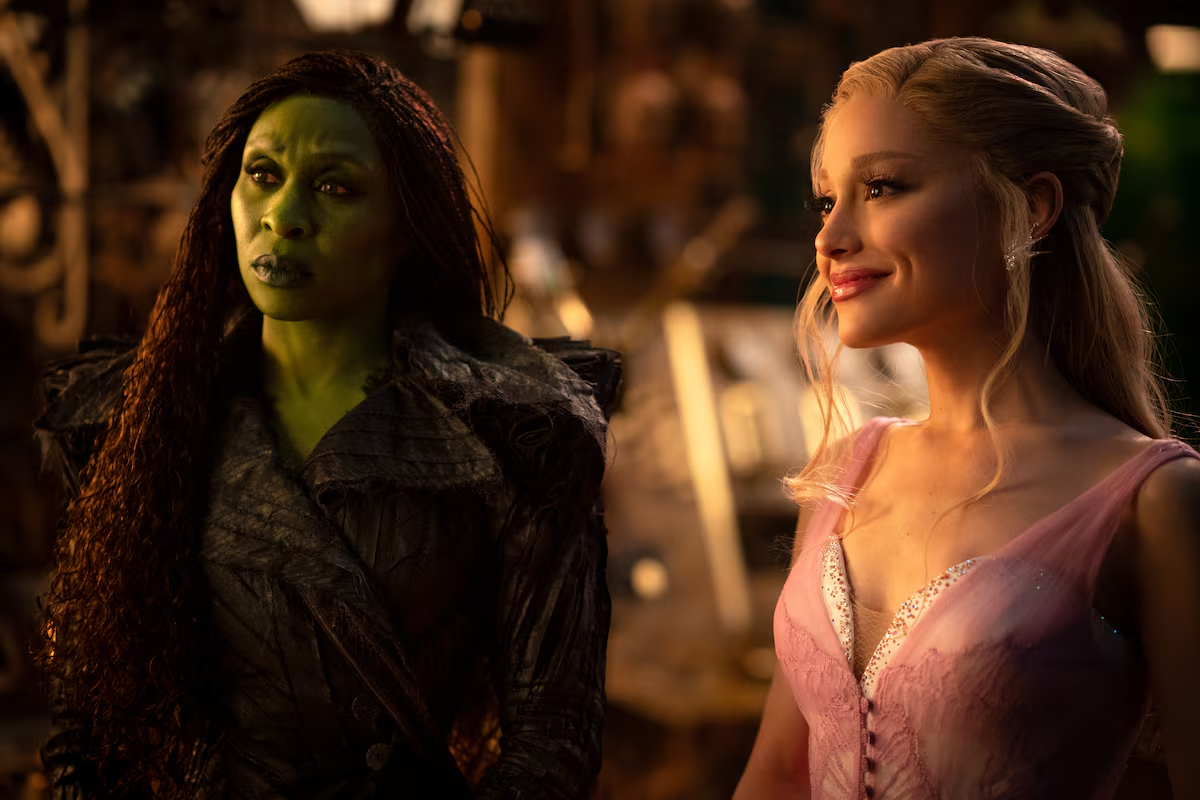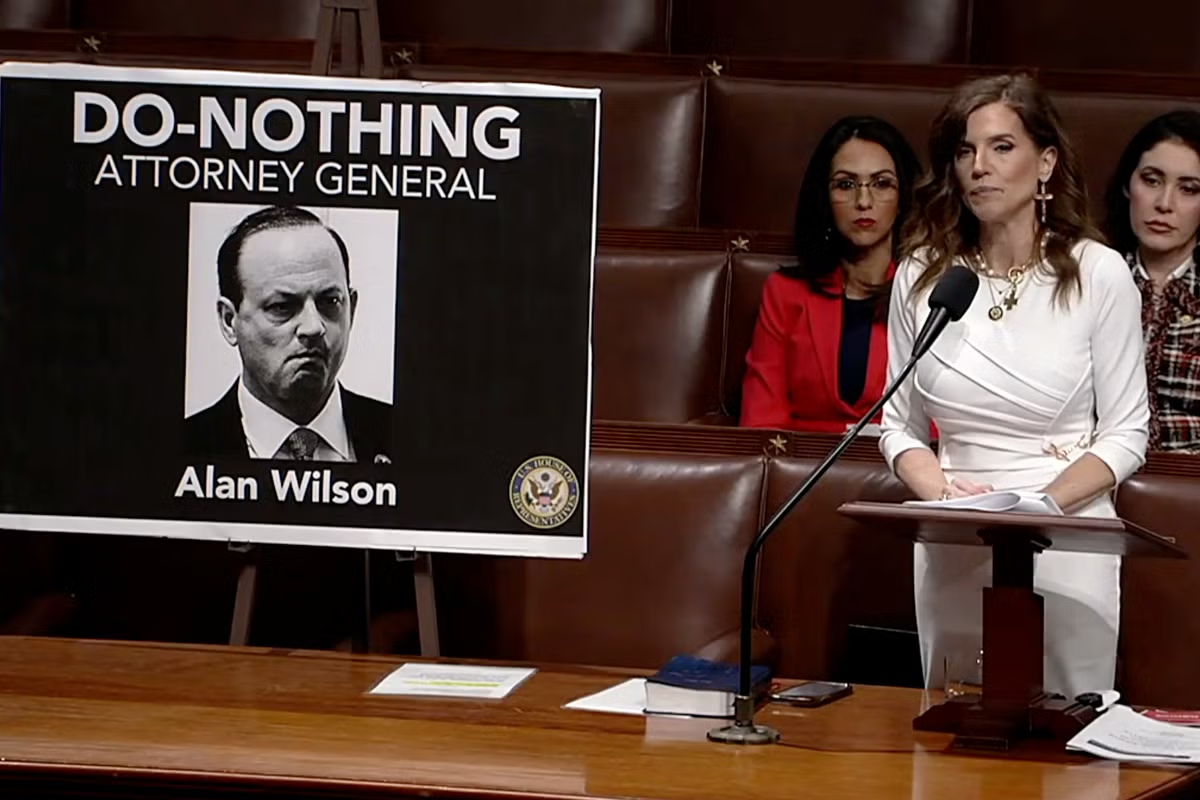Colourless and soggy sequel Wicked: For Good is a title of wishful thinking

Open this photo in gallery:
Cynthia Erivo, left, and Ariana Grande reprise their roles of Elphaba and Glinda in Wicked: For Good.Photography provided by Giles Keyte/Universal Pictures
Wicked: For Good
Directed by Jon M. Chu
Written by Winnie Holzman and Dana Fox
Starring Cynthia Erivo, Ariana Grande and Jeff Goldblum
Classification PG; 138 minutes
Opens in theatres Nov. 21
Maybe there was something savvy about splitting Wicked’s big screen incarnation into two. Sure, the first movie was bloated, stretching a first act into a runtime that matched the Broadway musical as a whole (intermission included). But, for all its flaws (and there are so many), Jon M. Chu’s Wicked was a cohesive and satisfying enough villain origin story that sent audiences out on a high note – specifically Cynthia Erivo’s spectacular rendition of the show-stopping number, Defying Gravity. The movie ended up earning 10 Oscar nominations, more than $750-million at the global box office and enough goodwill to compel fans to return for the concluding chapter, Wicked: For Good.
But here comes the hard part. Even in its Broadway form, Wicked’s second act is a deflating mess. Its alternative backstory – explaining the Wicked Witch of the West’s misdeeds as an antihero’s desperate and misunderstood attempts at pushing back against rising totalitarianism in Oz – tends to be incoherent. There’s just so much laborious tip-toeing around the action from The Wizard of Oz, occasionally stepping on a largely unseen Dorothy’s ruby slippers, which nearly breaks the spell cast by that glorious first act.
Open this photo in gallery:
Jeff Goldblum, left, plays The Wizard of Oz, who paints Elphaba’s resistance to the oppression of the animals in Oz as terrorism.
By breaking Wicked into two movies, the brain trust behind it all got to reap the rewards the first time out. But “no good deed goes unpunished,” as the second act’s most rousing number concludes. Wicked: For Good, lumbering its way to the finish line, makes good on the punishment.
The burdensome plot mechanics of Act 2 fall heaviest on its lead duo, Erivo and Ariana Grande – two outstanding performers whose magic pairing made the first movie soar high above its faults. As Elphaba (the given name of the Wicked Witch of the West), before she’s tarred and feathered as a villain, Erivo powered through the meekness of her outcast, green-skinned character with quiet and righteous ferocity.
It’s fair to assume that Erivo’s stellar portrayal of a character faced with microaggressions (that grow increasingly hostile) benefits from her lived experience as a Black woman. Don’t let that minimize how much more she gives: the steely resolve guarding Elphaba’s hurt, the theatricality of movement and those roaring pipes that overpower the movie’s visual noise.
Open this photo in gallery:
Erivo, left, and Jonathan Bailey’s Fiyero.
As Glinda, or the Good Witch of the North, Oz’s white saviour, valorized because of a Black … errr … Green woman’s labour, Grande is likewise outstanding, performing a delicate dance between daft, infectiously joyous and empathetic. When the duo shares the screen together – for a petty duel worth a cackle or two, or a final duet where clips for Grande’s Oscar campaign will no doubt be sourced – Wicked: For Good is good. The problem this time out is that those moments together are spare.
Glinda is mostly stuck posturing (and compromising) as a political tool for Jeff Goldblum’s charlatan Wizard and Michelle Yeoh’s scheming Madame Morrible, who paints Elphaba’s resistance against their oppression toward marginalized communities in Oz (in this case, animals) as terrorism. Sure, it’s an allegory for our times, but one that refuses to connect emotionally because, as on stage, the plot is too busy with those machinations where it can meet The Wizard of Oz.
Elphaba is largely flailing along with what the narrative demands, which includes turning a soured munchkin into a heartless tin man, chasing down a farm girl who makes off with her late sister Nessarose’s slippers (which are no longer ruby, likely due to copyright), and salvaging a once-beloved scarecrow from a violent but entirely tension-free standoff. She does all this while still attending to Glinda’s moral indecisiveness. It’s a slog.
Open this photo in gallery:
In the film, Grande’s Glinda is mostly stuck posturing as a political tool for the Wizard and Madame Morrible.
Chu can’t be entirely blamed for the material he’s working with. But what to make of all the clumsy staging? And the faulty showmanship from a director who seemed to have the pedigree to dazzle us, what with his outstanding work on the Step Up franchise and another Broadway adaptation, In The Heights? Even in Act 2, Wicked’s stage version had one redeeming virtue that Chu’s movies continue to bungle: the lavish production design, which was so tactile and colourful.
There’s impressive (and expensive) production in the Wicked movies, too, between intricate costuming and elaborate sets. But they are often drowned by hideously muddy CGI. Meanwhile, so much backlit scenery leaves the colours all washed out. The latter point remains the most soul-crushing flaw for slop that dares to exist in the shadow of The Wizard of Oz, in which a plot involving a yellow brick road, an Emerald City and (yes, the copyrighted) ruby slippers made glorious use of Technicolor.
That plot gets lost in these desaturated Wicked movies. They look less like The Wizard of Oz and more like Fruit Loops that had been left sitting in a bowl of milk for too long – those bright solid colours bleeding out and leaving nothing but a soggy mess.





